Dr. Croft is the Founding Director of the Spine Research Institute of San Diego. He has been actively engaged in whiplash research for the past twenty-five years and has co-authored a best-selling textbook on whiplash (Whiplash Injuries: the Cervical Acceleration/Deceleration Syndrome, 3rd edition, 2002) and temporomandibular joint disorders (Whiplash and Temporomandibular Disorders: an Interdisciplinary Approach to Case Management), along with several other books, textbook chapters, and over 320 professional papers. He was the original developer of the now widely used whiplash (WAD) grading system, as well as the widely adopted treatment guidelines. Dr. Croft wrote and produced the Emmy-nominated video Whiplash, and the most recent human subjects crash test DVD’s, Machine vs. Man I and II and is the only chiropractic physician to conduct ongoing, full scale human volunteer crash testing.
Dr. Croft is a biomechanist, a trauma epidemiologist, and chiropractic orthopaedist and lectures extensively in the United States and abroad. He serves on the editorial boards of several professional peer-reviewed chiropractic, medical, and engineering journals, including Spine, Archives of Physical Medicine and Rehabilitation, SAE, JMPT, DC Tracts, Journal of Musculoskeletal Pain, Chiropractic Technique, and is a senior editor of the Journal of Whiplash-Related Disorders. He has served as faculty of University of California, San Diego, Southern California University of Health Sciences, Western States Chiropractic College, and New York Chiropractic College. In addition to his own research, Dr. Croft has contributed to several research steering committees and has participated in RAND projects, including the cervical spine manipulation study, and has served as a grant reviewer for the Foundation for Chiropractic Education and Research and the National Institutes of Health. Dr. Croft is also a certified accident reconstructionist (NUTI). He currently serves as a panelist on the International Whiplash Task Force. Dr. Croft’s focus is public health and injury prevention and he is very close to receiving his PhD in epidemiology.
In an interview with The American Chiropractor (TAC), Dr. Croft shares some of the wisdom his studies have distilled.

TAC: Dr. Croft, please tell our readers a bit about some of the things you have been able to discover regarding whiplash through research.
Croft: Most of the discoveries concerning the whiplash phenomenon have come from the eight years of human subject crash testing we’ve done at the Spine Research Institute of San Diego. In many cases, our findings have been new and innovative and, in other cases, they have served to support or extend previous research or theory. We’ve found, for example, that occupant kinematics and biomechanics is much more complicated than previously thought and that smaller persons and larger persons have very different responses.1 A small female will experience two to four times the head linear acceleration as a larger male in the same crash. The male, however, will experience greater rearward bending.
We’ve compared frontal and rear impact collisions under identical crash conditions.2,3 We’ve tested the standard crash test dummy (HYBRID III) and the newer, biofidelic rear impact dummies (RID2 and BioRID II). In all cases, this was the first research to actually compare human and dummy responses on a validation platform under the same crash conditions.8,9

We’ve evaluated Saab’s antiwhiplash seat in a direct comparison to standard car seats. We’re the only group, to date, that has followed up with long-term surveillance of crash test volunteers using digital incliniometry, algometry, and multiple upright MRI with flexion and extension.
Unlike reports from some crash testing, we’ve documented injuries in about 30 percent of volunteers. We’ve also evaluated some standard accident reconstruction methodologies, such as the momentum/energy/restitution (MER) method and shown that it is not uniformly reliable.6 We’ve evaluated event data recorders (EDR)—the car’s black box that records acceleration during a crash—and compared it to a gold standard data from highly sophisticated and calibrated accelerometers. Its accuracy turns out to be nonlinear, falling off at lower crash speeds. We’ve shown that 45 percent of all chronic cervical spine pain is likely the result of motor vehicle crash injury.12 These are just some highlights of the many results and findings we’ve gained from crash testing. And then we’ve done some population-based studies10,11 and clinical studies as well.13



TAC: How do you feel the chiropractic profession is prepared to deal with CAD-type injuries?
Croft: To be frank, most chiropractors don’t have much formal training in whiplash traumatology because the curriculum in our schools doesn’t include it. I recognized this in my first year of practice and, while filling in the gaps in my knowledge, the idea of the whiplash textbook came to life. The first edition came out in 1988 and Whiplash Injuries: the Cervical Acceleration/Deceleration Syndrome is now in its third edition. The educational shortfall, of course, has also led to my seminar series and we provide chiropractic students with a large discount. The problem seems to be that the schools are under pressure to satisfy CCE core requirements on the one hand, and maintain their competitive edge on the other. Adding optional curriculum only extends the duration of the program and makes the school less competitive with other schools. So it is unlikely that students will get more than a lecture or two on whiplash in the future. That’s about all I got at Los Angeles Chiropractic College.
The problems of Personal Injury today are more convoluted than they were in the past. Insurers have made it progressively more challenging for doctors and lawyers over the past two decades, and physicians and lawyers have generally followed one of two paths: either they continue to do the same old thing year after year until they seemed to be swamped at every turn, or they attempt to keep pace with the rapidly evolving strategies. The first group eventually has given up, while the second group is actually able to pick up the slack from the first group. I remember that, in the early 1980’s, we just sent in our bills and we got paid. We wrote narrative reports in cases where there were lawsuits and they seemed to be sufficient, even though—speaking, at least, for myself—I had no idea what I was doing and would probably be mortified to read those reports now.
The world is much more sophisticated today. Not only has an entire new literature developed, but the insurance industry has developed a number of very successful tactics to defeat claims made against them.
TAC: Can you give us some examples of these new tactics?
Croft: Chief among them is the MIST defense. This arose out of an Allstate program which was devised by a large consulting firm in the 1990’s. It stands for minor injury, soft tissue. It’s been so successful for Allstate that most major auto insurers have followed suit in one way or another. The chief tactics are to “delay, deny, and defend.”
The way it works is this: When a claim is made against the insurer and the property damage of the claimant’s vehicle is under $1000, the case is automatically “segmented” to the special investigative unit (SIU). This is the fraud investigative arm, so it is a serious issue and can later result in a complaint being filed with the state board of examiners and even trials in front of administrative law judges. The insurers consider this a “soft fraud,” meaning that it is not an outright insurance fraud, but a situation in which medical charges and claimed injuries are excessive or overstated. The end result, however, is that the insurer will use this as a pretext to deny billing.
SIU investigators may call the patient and request an interview. They will ask what the doctor did on various appointments. Usually, patients can rarely verbalize their office visit in detail and usually answer, “I don’t remember.” This will be interpreted to mean that nothing was done—more evidence of fraud.
If there is an attorney on the case, I would advise patients to refer these calls from investigators to the attorney. The most important take-home point from this is that we investigated the correlation between crash damage and three possible outcome parameters: (1) acute injury risk, (2) injury severity, and (3) long-term symptoms. In this meta-analysis of all medical and engineering literature going back to 1970, we found only four relevant studies and they did not support the notion that one could gauge any of these parameters from crash severity.5 This paper is available as a free download (go to www.medscimonit.com and search under author for “croft”) and should be in the possession of every physician and attorney working within this arena, because it shows, once and for all, that this MIST segmentation policy is not scientifically or empirically based. Instead, it is an arbitrary, cost-saving device for the insurer which is deceptive and entirely bereft of an evidentiary foundation.
The reason it works so well is because low velocity crashes that produce minimal property damage do look trivial to most lay people who see only a photo of the car’s bumper, so the defense can effectively rely on the jurors’ intuition. We produced DVD’s of real crash test footage which more dramatically illustrate what happens in these MIST cases, but most jurors will never get to see these.
Ultimately, to be successful in PI today, DC’s need to have embraced the latest literature. They need to understand crash mechanics, occupant kinematics, and the numerous strategies applied in these cases. Otherwise, they—and their patients—will more likely fall prey to the more robust tactics employed by the defense.
But, let me be clear about one thing: In nearly every case, the defense case is almost entirely based on junk science, innuendo, reliance on faulty “common sense,” and outright deception. If you know how to deal with it, it dissolves like smoke in the wind.
TAC: Do you have a particular stance with relation to videofluoroscopy?
Croft: I have been an advocate of videofluoroscopy (VF) since the early 1980’s. It can provide information about the spine that cannot be obtained by other methods. In demonstrating certain types of pathology, therefore, it is unique as a modality.
Having said that, the scant amount of research to date is disappointing. My colleagues and I did some research years ago4,7 but, as an orthopaedist, I felt that radiologists should be the ones to carry on with that kind of work. Oddly, though, radiologists, with some exceptions, have turned a blind eye to VF, and many appear to be outwardly hostile to it.
I think it is crucial that this profession develop a training and licensing infrastructure for VF. We should also develop a best practices guidelines with respect to indications for it, how it should be performed, and what it should cost. Currently, none of this infrastructure exists. It is also crucial that we invest in more research, beginning with the collection of normative data.
TAC: What is it about CAD that has captured your imagination and led to the vast database of information that you have been able to accumulate?
Croft: That’s simple. This is a huge public health problem today in all parts of the world. Every year, in the U.S., three million people are injured this way. Of these, about half will be left with permanent residua and half a million will become disabled to some degree. It has an annual comprehensive cost (i.e., the total cost including lost wages, medical, legal, etc.) of $43 billion, which is about what we spend on diabetes. But, unlike diabetes, whiplash injuries are largely preventable, without resorting to expensive lifelong interventions and dramatic lifestyle changes.
We are interested in ways to (1) prevent crashes, (2) improve crashworthiness to reduce injuries in collisions that are unavoidable, and (3) make treatment more efficacious. All of these are exciting vistas and all of them are being actively and aggressively researched right now. This is, in fact, one of the fastest growing areas of investigation in both medicine and engineering and I am involved in both fields, so “captured” is a very apt term. But I can certainly say that I love my work.
TAC: Are you currently seeing patients?
Croft: I see patients in consultation. In some cases, I simply review records and render reports. I do a lot of international work in this manner. In other cases, patients come to California to see me for an examination. They come mostly from the U.S.
I serve as an expert in cases large and small. I think my input is unique, because I can provide an opinion not only as a physician, but also as an epidemiologist, crash test researcher, and biomechanist. Wearing all of these hats means I can provide a sort of polymath opinion for the price of a single expert, while simultaneously obviating the problems of internal disagreement among multiple experts!
TAC: What is the most common problem you see among chiropractors today?
Croft: A lack of cohesion and a failure to understand that the old “separate but equal” philosophy is no longer viable. Most chiropractors don’t seem to recognize that we won’t be able to legislatively insulate ourselves from extinction. Many have been falsely buoyed by the Wilke’s case. This merely changed the game plan of chiropractic’s enemies. The erosion of our influence and scope is evident in many states, including California. With a stroke of his pen, long-time chiropractic friend and now Governor Arnold Schwarzenegger sharply limited our place in the workers’ compensation system.
The healthcare world now demands verification and validation. We have not been very responsive in that context. Nor have we been effective in policing our own ranks. Meanwhile, PT’s have been more active in research and now have doctorate (DPT) level programs. They will be looking to have autonomy and to practice manipulation and, if the insurers see them as being more tractable than DC’s have been, watch for a change in reimbursement practices that will favor DPT’s. And the profession won’t be able to sue its way out.
We are also seeing changes in the use of non-physicians—a change also driven by insurers’ profit goals. In many cases now, when patients have surgery, the assistant surgeon is a physician’s assistant (PA) rather than a surgeon. Will there be a corollary in chiropractic?
TAC: What is the biggest problem or challenge you see in the chiropractic profession today?
Croft: The biggest challenge is to face the research/validation/cohesion problem mentioned earlier. If the members of this profession would donate just $100 per year to a research fund, we could really accomplish something big. Little science shops like mine have always—with some exceptions—been self-funded. We simply don’t have the budget for really big projects. But that’s what the profession desperately needs.
TAC: Do you have any recommended marketing strategies that chiropractors can do to attract new patients and/or to keep current patients?
Croft: Yes. We developed a program called Auto Safety Facts that is designed to provide physicians with the tools to go out to their communities and educate the public in critically important safety issues like head restraint geometry, seat belts, airbags, child protection systems, etc. It is not about chiropractic—it is about safety. Of course, it is also useful in the clinic. Our doctors have had surprisingly good success with it. And, best of all, they are probably actually saving lives and preventing serious injuries in the process. This is the kind of positive PR the profession really needs.
You may contact Dr. Croft at [email protected], www.srisd.com or by calling the Spine Research Institute of San Diego at 1-619-423-9867.
1. Croft A, Freeman M. The Neck Injury Criterion (NIC): future considerations. 44th Annual Proceedings of the Association for the Advancement of Automotive Medicine. Chicago, IL, 2000:519-21.
2. Croft A, Haneline M, Freeman M. Differential Occupant Kinematics and Forces Between Frontal and Rear Automobile Impacts at Low Speed: Evidence for a Differential Injury Risk. International Research Council on the Biomechanics of Impact (IRCOBI), International Conference, Munich, German, September 18-20 2002:365-6.
3. Croft A, Haneline M, Freeman M. Low speed frontal crashes and low speed rear crashes: is there a differential risk for injury? . 46th Annual Proceedings of the Association for the Advancement of Automotive Medicine. Tempe, AZ., 2002:79-91.
4. Croft A, Young D. Videofluoroscopy: a sampling of chiropractic radiologist’s opinions. Topics Diagn Radiology Adv Imag 1994;2:4-10.
5. Croft AC, Freeman MD. Correlating crash severity with injury risk, injury severity, and long-term symptoms in low velocity motor vehicle collisions. Med Sci Monit 2005;11:RA316-21.
6. Croft AC, Haneline MT, Freeman MD. Automobile crash reconstruction in low speed rear impact crashes utilizing a momentum, energy, and restitution (MER) method. International Congress on Whiplash-Associated Disorders. Berne, Switzerland, 2001:28.
7. Croft AC, Krage JS, Pate D, et al. Videofluoroscopy of cervical spine trauma-an interinterpreter reliability study. J Manip Physio Ther 1994;17:20-4.
8. Croft AC, Philippens MMGM. The RID2 biofidelic rear impact dummy: A pilot study using human subjects in low speed rear impact full scale crash tests. Accid Anal Prev 2007;39:340-6.
9. Croft AC, Philippens MMGM. The RID2 biofidelic rear impact dummy: a validation study using human subject in low speed rear impact full scale crash tests. Neck injury criteria (NIC). 2006 SAE World Congress. Detroit, MI: SAE, 2006.
10.Freeman M, Croft A, Centeno C. Fatal head injury cases in a rural Oregon county. . Proceedings of the 19th World Congress of the International Traffic Medicine Association. Budapest, Hungary, 2003.
11. Freeman MD, Croft AC, Nicodemus CN, et al. Significant spinal injury resulting from low-level accelerations: a case series of roller coaster injuries. Arch Phys Med Rehabil 2005;86:2126-30.
12.Freeman MD, Croft AC, Rossignol AM, et al. Chronic neck pain and whiplash: a case-control study of the relationship between acute whiplash injuries and chronic neck pain. Pain Res Manag 2006;11:79-83.
13.Freeman MD, Sapir D, Boutselis A, et al. Whiplash injury and occult vertebral fracture: a case series of bone SPECT imaging of patients with persisting spine pain following a motor vehicle crash. Cervical Spine Research Society 29th Annual Meeting. Monterey, California, 2001.
 AC GRACE
AC GRACE ![]() Be well homeopathic
Be well homeopathic  ATRIUM
ATRIUM  ALL ONE Fruit Antioxidant Formula
ALL ONE Fruit Antioxidant Formula  Anabolic LABORATORIES
Anabolic LABORATORIES  Alacer Corp
Alacer Corp  BIO-BOTANICA
BIO-BOTANICA 
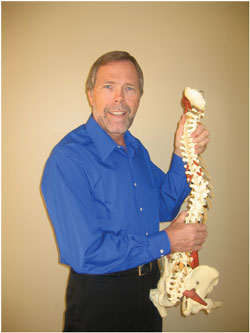
 Woggon: In 2000, I established the CLEAR Institute, which stands for Chiropractic Leadership, Educational Advancement & Research. The Institute was set up to advance the profession of chiropractic and then evolved into scoliosis care. In 2004, CLEAR Institute began teaching scoliosis seminars to the chiropractic profession.
Woggon: In 2000, I established the CLEAR Institute, which stands for Chiropractic Leadership, Educational Advancement & Research. The Institute was set up to advance the profession of chiropractic and then evolved into scoliosis care. In 2004, CLEAR Institute began teaching scoliosis seminars to the chiropractic profession.





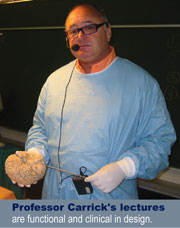




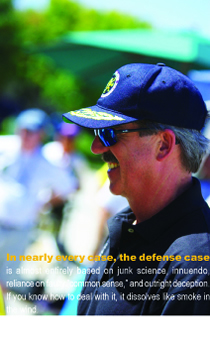






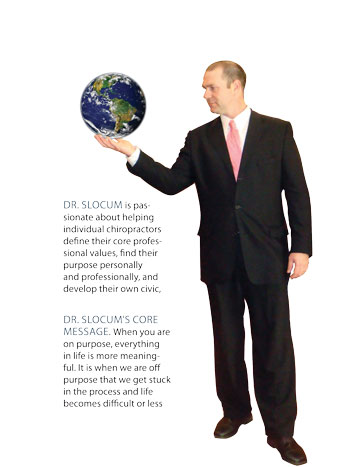







 Life Chiropractic College West has been a pioneer in the chiropractic profesion with respect to the implementation of digital imaging.
Life Chiropractic College West has been a pioneer in the chiropractic profesion with respect to the implementation of digital imaging. In 1994 Dr. Gerry Clum spoke with then-House Majority Leader Richard Gephardt about chiropractic in national health care reform.
In 1994 Dr. Gerry Clum spoke with then-House Majority Leader Richard Gephardt about chiropractic in national health care reform. World Spine Day-October 2006 Dr. Clum was honored by a resolution from the California State legislature, presented by Assemblyman Johan Klehs, recognizing his 25 years as president of Life Chiropractic College West.
World Spine Day-October 2006 Dr. Clum was honored by a resolution from the California State legislature, presented by Assemblyman Johan Klehs, recognizing his 25 years as president of Life Chiropractic College West. Dr. Clum(center) presided over the 2007 World Federation of Chiropractic assembly meeting held in Vilamoura, Portugal, in May. Also shown at the opening session are David Chapman-Smith (WFC Secretary General), Stathis Papadopolous, D.C. (WFC 1° Vice President) and Dennis Richards, D.C. (WFC Secretary-Treasurer)
Dr. Clum(center) presided over the 2007 World Federation of Chiropractic assembly meeting held in Vilamoura, Portugal, in May. Also shown at the opening session are David Chapman-Smith (WFC Secretary General), Stathis Papadopolous, D.C. (WFC 1° Vice President) and Dennis Richards, D.C. (WFC Secretary-Treasurer)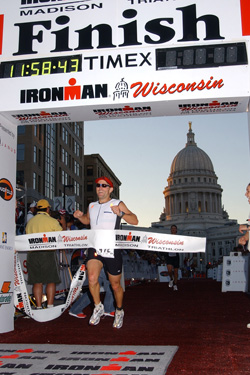





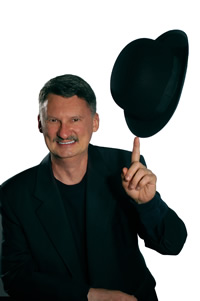


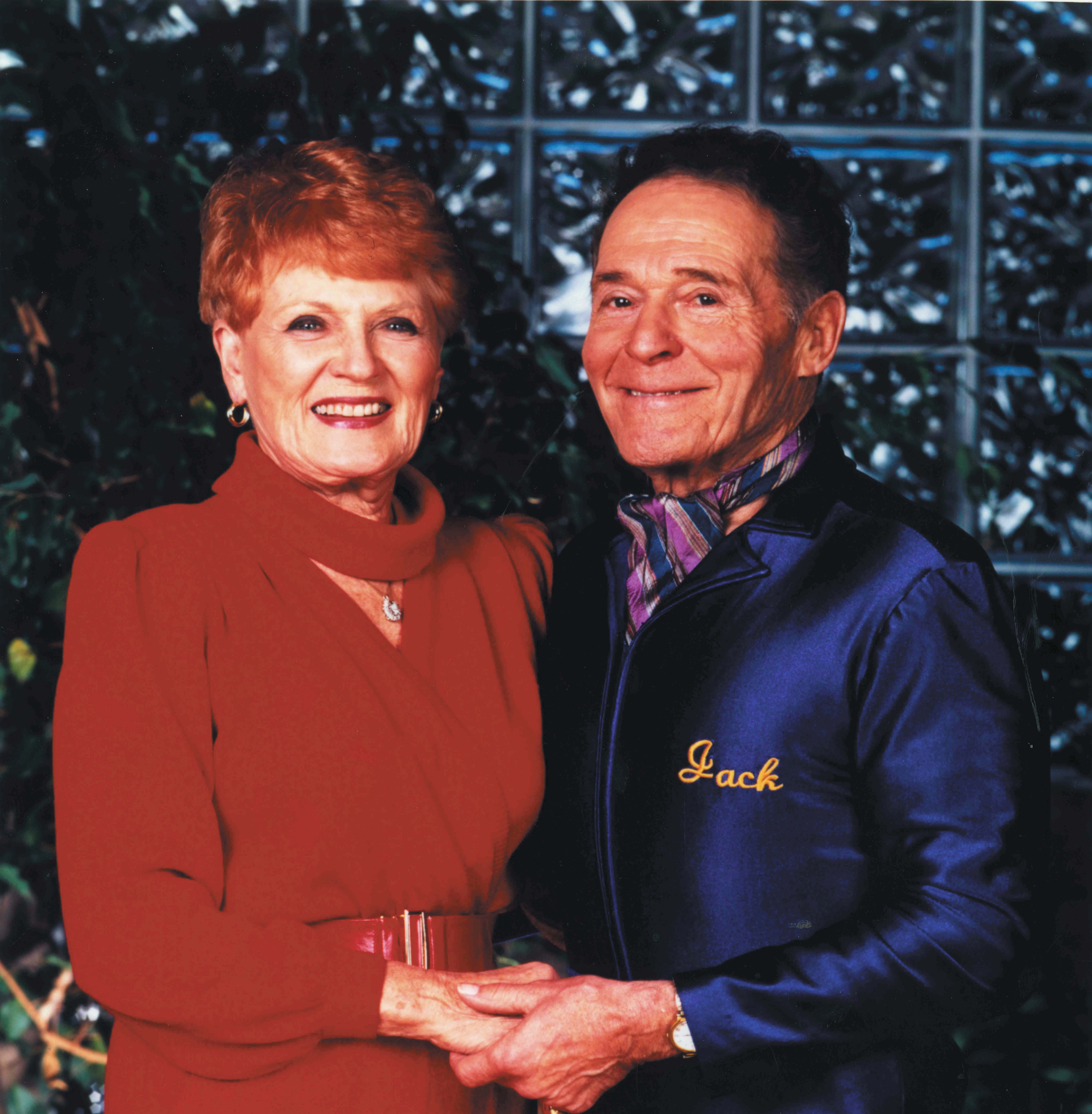
 Jack Lalanne and his wife Elaine Lalanne
Jack Lalanne and his wife Elaine Lalanne

